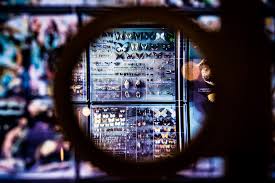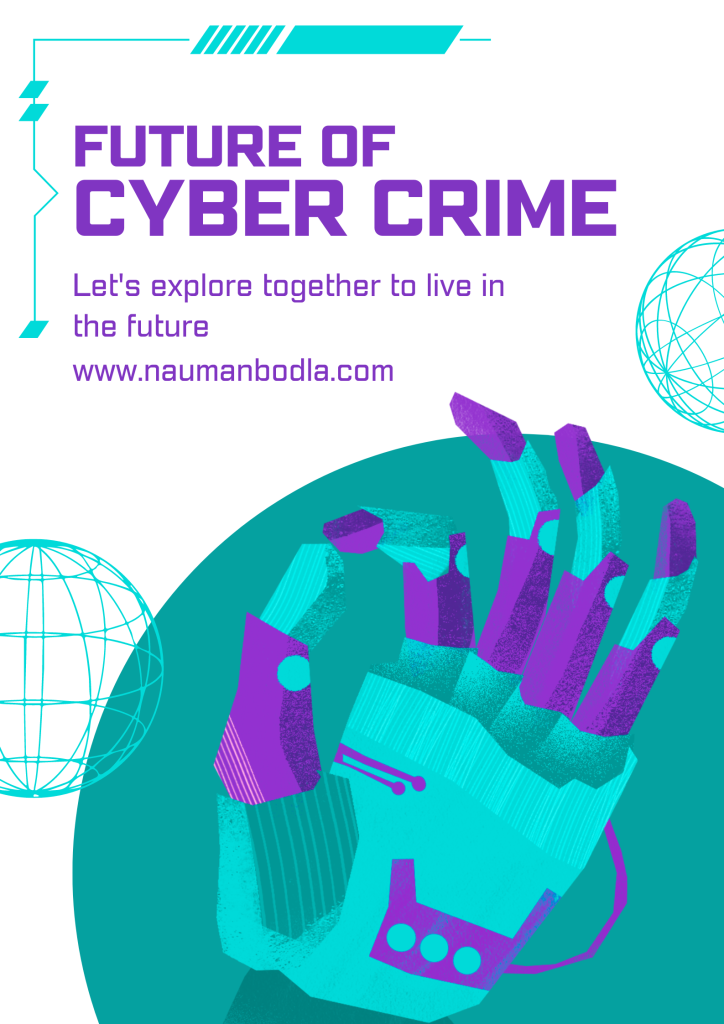Digital Forensics Guidelines
Digital forensics is the process of uncovering and interpreting electronic data to be used as evidence in legal proceedings. Digital forensics is now a days a requirement for investigating almost any type of crime whether that is a criminal investigations or a civil litigation. Theses digital forensics guidelines will play important role to reveal the fact which is based upon digital footprints that are left behind by individuals or entities.
Our online activities always leave a trail or footprints of whatever devices we use and these footprints also include their unique identity either in the form of IP addresses, MAC addresses, IMEI, IMSI etc. In addition to the unique identifiers many other footprints in the form of emails, chats, documents, browsing history, search history, cookies, cache, etc are also traceable using digital forensics. All of these hold valuable clues in investigations of all sorts of crimes. Since evidence and clues are concealed in the form of digital data therefore, digital forensics experts play its role to dig out these sensitive, discrete and vital pieces of evidence.
But what exactly does digital forensics entail, and how does it work? Is the question of the day.
What is Digital Forensics?
Digital forensics is the systematic process of identifying, collecting, preserving, analyzing, and presenting digital evidence in a court of law. This evidence can range from emails, documents, photos, videos, search history, caches, cookies and metadata e.t.c . The evidence may be overt or covert which is stored within electronic devices or network devices.
What is Primary Goal of Digital Forensics?
The primary goal of digital forensics is to accurately reconstruct the events and uncover the truth behind the alleged illegal digital activities. But mind you that ultimate goal of the digital forensics is to present the incriminating evidence before the court of law.
Imagine a crime scene, but instead of fingerprints and footprints, the evidence is contained in a digital evidence. Digital forensics is the scientific process of collecting, analyzing, and presenting digital evidence in a way that fulfils legal requirements of procuring, securing and presenting evidence (before the court of law). Digital forensics is all about finding and recovering this evidence from electronic devices like computers, phones, tablets, hard drives, network devices and even IoTs (Internet of Things), and interpreting this evidence in a form that is admissible before the court of law.
Why is Digital Forensics Important?
Since all of us know that, day by day cybercrimes are becoming more and more sophisticated. Digital forensics helps us to gather evidence which helps to investigate these crimes and to bring the perpetrators to the justice. It is also crucial in civil cases which involves intellectual property theft or disputes where we can identify the #deepfake, forgery and plagiarism.
What Does a Digital Forensics Expert Do?
The job of a digital forensic expert is like being a detective, but specifically for the digital world. A digital forensic expert follows a strict pre-defined process to ensure that the digital evidence found in a device is reliable and admissible in court.
On the bases of my experience I will now discuss the breakdown of the processes that must be followed by a digital forensic expert to ensure that the evidence is not contaminated and its integrity is intact and not compromised.
- Identification and Collection: The process of digital forensics begins with identifying potential sources of digital evidence, which could include computers, smartphones, servers, network devices, or even cloud storage. Once identified, an expert will carefully collect relevant data without altering or damaging the original sources.
- Seizing the Device: The first step is to carefully acquire the digital device without altering any data. This could involve making a forensic copy of the device’s storage. By making a forensic copy I don’t mean to copy all data but actually I mean to make it very clear here that a bit-by-bit copy of the device using specialized forensic tolls (often referred as physical image) is mandatory to conduct a digital forensics.
- Preserving the Evidence: A digital forensic expert needs to ensure that the actual evidence remains unchanged. This requires using specialized tools and techniques to ensure the integrity and authenticity of collected evidence. This usually includes creating forensic image of digital media using specialized tools and techniques to prevent any alterations to the original data.
- Analysis of the Device: This is the stage where things start getting interesting. Because, during the analysis phase, forensic experts examine the collected evidence using various tools and methodologies. A digital forensic expert uses specialized software to analyze the data, searching for hidden files, digging into network activities, finding information in deleted items, and tracing the alleged activity. This could involve recovering deleted files, examining metadata, or tracing digital communications to reconstruct the sequence of events accurately. All this is done using specialized forensic analysis tools while keeping every activity documented.
- Identifying and Corroborating Incriminating Evidence: Everything that a digital forensic expert finds on any digital device is not a piece of evidence. He needs to interpret the data in the context of the alleged crime and has to connect or eliminate the alleged criminal. This activity mainly focuses on separating incriminating data/evidence from irrelevant /junk information or data.
- Interpretation: Interpretation involves making sense of the analyzed data to draw conclusions or identify patterns relevant to the investigation. Forensic experts may use their expertise to connect disparate pieces of information and form a coherent narrative. The narrative has to be straight forward and simple enough to be understood by a non technical person.
- Documentation and Presentation: Finally, the digital forensic expert documents its findings in the form of its report and presents it in a clear and concise way that’s understood by non-technical investigator, prosecutor and the judge or jury. This report outlines the methodology used, the evidence collected, the analysis conducted, and the conclusions drawn. Most of the times forensic experts are also required to testify their findings in the court to fulfill legal requirement where they also undergo cross examination but the councils of the opponent party.
Types of Tools used for Digital Forensic:
Digital forensic experts rely on a wide range of techniques, tools and software, which help them in their analysis. These tools may include open-source software like Autopsy and The Sleuth Kit and some commercial solutions such as EnCase and FTK (Forensic Toolkit). Each tool serves a specific purpose like recovering deleted files, analyzing network traffic, identification of incriminating evidence from stored data or extracting and analyzing data from mobile devices. On the basis of functionality, Digital Forensic Tolls and software may be categorized as under:
Forensic Imaging Tools: This type of tools/softwares are used for creating bit by bit copies of digital devices which are later used by them for analysis..
Data Carving Tools: An important task of digital forensic expert is to locate and recover deleted and hidden data. The tools / software which are specialized for recovering deleted or hidden files are categorized under data carving tools.
File System Analysis Tools: Without understanding that how the data is stored and accessed on any device, it is impossible for any digital forensic expert to successfully conduct forensic analysis. Therefore, he uses tools / software which specialize for understanding that how data is stored and accessed on a device. These type of tolls are normally termed as file system analysis tools.
Network Analysis Tools: Another important type of analysis that is required to be done by digital forensic expert is examining network traffic in light with the given suspicious activity. This type of analysis requires specialized tools/software which understands network topologies, routes, language etc. and the tools used for this purpose may be categorized as network analysis tools.
The Skills Needed to become a Digital Forensic Expert:
Besides technical expertise, a successful digital forensics expert needs a strong foundation and trainings in:
Attention to Detail: Missing even the smallest clue can have a significant impact.
Analytical Thinking: Making sense of complex data and drawing accurate conclusions.
Communication Skills: Conveying technical findings in clear and simple terms.
Legal Knowledge: Understanding how digital evidence is handled in court.
Challenges in Digital Forensics:
While digital forensics is a powerful tool for uncovering evidence, it also presents several challenges. These challenges include:
- Encryption: Encrypted data presents a significant obstacle for forensic investigators, as decrypting it without the proper keys can be extremely difficult or even impossible.
- Anti-Forensic Techniques: Perpetrators may employ anti-forensic techniques to cover their tracks, making it harder for investigators to uncover evidence. These techniques could include data wiping, file obfuscation, or steganography.
- Jurisdictional Issues: With digital evidence often crossing international borders, jurisdictional issues can complicate investigations, requiring cooperation between law enforcement agencies from different countries.
The Significance of Digital Forensics:
In an era where digital devices are everywhere, digital forensics plays a crucial role in solving crimes, preventing cyber-attacks, and ensuring accountability in digital transactions. Whether it’s investigating financial fraud, cyber-bullying, murder, abduction, money laundering, banking crime, or intellectual property theft; digital forensics provides investigators with the tools and techniques necessary to uncover the truth hidden within digital data.
The Future of Digital Forensics:
As technology evolves, so do the tools and the challenges of digital forensics. With the rise of new technologies like the Internet of Things (IoT) and artificial intelligence (AI), new methods and tools will be needed to meet the pace. The need for skilled and dedicated professionals to navigate the ever-expanding world of digital evidence will always be in demand for the next era and so on.
Conclusion:
Digital forensics is a fascinating field that combines technology, investigative skills, and legal knowledge to uncover digital evidence and solve complex cases. As technology continues to evolve, the challenges and opportunities within the sphere of digital forensics will rise to the proportionate development. By understanding the fundamentals of digital forensics, you can better appreciate its importance in today’s digital world and its role in upholding justice and accountability.
In conclusion, digital forensics is not just about solving crimes but also about ensuring the integrity and security of digital systems, protecting individuals and organizations from cyber threats, and upholding the rule of law in the digital age.
This is just a glimpse into the exciting world of digital forensics. Stay tuned for future blog posts where I will delve deeper into specific techniques, case studies, and the latest trends in the field.
Disclaimer: This blog post is intended for informational purposes only and does not constitute legal advice.
Other related topics worth reading:
Delving into the Digital: A Look at Cyber Crime Investigations




Good guidline for the understanding of digital forensics (DF). An indepth explanation can be the way forward. Especially, the text on what is DF, and what does DF expert do, may need more elaboration. Overall good piece of info, I enjoyed reading.
Thanks for your feedback
Pingback: Digital Forensics Jobs - Nauman Ashraf Bodla
Pingback: 5 Major Branches of Digital Forensics - Nauman Ashraf Bodla